- Dental Implant Pain Causes and Best Treatments - September 15, 2020
- Clinic Brings Brighter Smiles to Local Faces - April 30, 2019
- Top 10 Wisdom Tooth Removal Clinics in Your City - March 28, 2019
Many of us have heard of dental fillings, or perhaps a cavity filling.
In general, we all know about this dental procedure and may have even had it done ourselves, but many of us don’t actually understand what it is, how it works, the wide variety of tooth filling options there are, and what its advantages and disadvantages are. Many also wonder does filling a cavity hurt.
This is exactly the purpose of this guide – to provide everything there is to know about the dental teeth filling procedure so that you can be thoroughly aware of your options and of what to expect. So, if you ever end up needing a cavity filling procedure, you won’t be taken by surprise.
What Is a Dental Filling?
The first question to address, obviously, then is what exactly is a dental filling?
Rather simply, it is when a dentist uses any one of a variety of materials (to be discussed further down) to fill a hole, crack, or missing part of a tooth. Filling a cavity is the most common reason for the procedure, but teeth filling can also occur to repair cracks in teeth, broken teeth, or even teeth that have been worn down over time.
There are a wide variety of materials that dentists may choose to use for fillings. Everything from gold to porcelain, to a tooth-coloured resin, are just a few examples. But we will touch on this later.
Why Dental Fillings?
When it comes to dental fillings, dentist offices have a number of reasons why they suggest them. Almost always, the advantages outweigh the disadvantages.
When a tooth has begun to decay or is affected by a cavity, it weakens the tooth and threatens surrounding teeth as well. Besides cosmetic issues, these affected teeth can leave nerves exposed, leading to significant pain as well as sensitivity to temperatures.
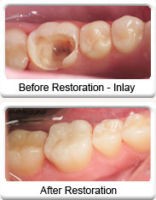

By getting teeth filled, it removes the decay to help protect it and prevent it from spreading and fills in the missing area. This is both for aesthetic, so that the tooth looks normal, as well as structural and health purposes so that the tooth and surrounding moth structure is not weakened by the gap. The filling can also prevent the nerve from being exposed and reduce pain.
How to Tell If You Need a Filling
It is not always easy to tell whether you need dental fillings. But there are symptoms and signs you can rely on to help determine if you need to see a dentist about the possibility.
Obvious symptoms are if you can actually see a hole, crack or decay in your tooth. However, some areas of decay or cavities may be in very hard to see places. Signs that you are dealing with these problems are:
• Tooth sensitivity to heat or cold
• Tooth pain
• Tooth pain when you chew or bite down
• If food seems to get stuck frequently between particular teeth
• If you notice a dark spot on your tooth or between teeth
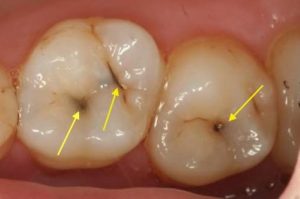
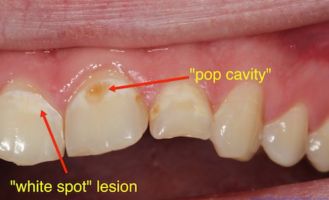
Dental Filling Procedure: What to Expect
The procedure to fill a cavity is fairly simple.
When you arrive at the dentist’s office, they will first numb the area to prevent pain during the procedure. Many people wonder, “does a filling hurt,” but because of this first step, the answer is no, usually not.
After you are sufficiently numb, the dentist will use instruments to remove all of the damaged and decayed parts of the tooth until only the healthy portion remains.
Once all of the damage and decay is removed, the dentist will then fill the space with the chosen filling material. They will then use tools to shape the filling to give you a proper bite and leave the proper space between your teeth.
It is likely that the dentist will have you test your bite numerous times to make sure it feels natural, and will probably also pass floss between the filled tooth and the tooth beside it to make sure it fits correctly.
Now, you may also be wondering “how long does it take to get a filling.” Other than waiting to get in for your appointment, usually not very long. However, certain types of fillings (see discussion below) do require a two-visit process, as some are made in a laboratory outside of the dentist office. This means you must go in for an initial appointment to have a mould made, then return to the office usually within the month to get the custom-made filling placed.
Does Filling a Cavity Hurt?
Many people worry about cavity filling pain, but this really isn’t usually an issue either during or after the procedure. Because of the local anaesthetic that is used to numb the tooth, you should be free of pain during the procedure itself.
Afterwards, usually, there is so much relief at having the decayed portion removed and any exposed nerves covered, that it feels much better after the procedure than before.
So: tooth filling – does it hurt? No, it does not.
After the Procedure
After getting a filling, your home care is fairly simple.
The anaesthesia will take 1-3 hours to wear off, so it is advisable to hold off eating until your feeling is mostly returned.
You should also be aware that the treated tooth may be heat or cold sensitive and sensitive to pressure for the initial hours or even days after the procedure. However, this will subside and everything should return to normal feeling.
You can begin eating, biting, brushing and flossing as normal as soon as the numbing is mostly gone.
Guide to Filling Types
We mentioned above that there are many types of filling materials to choose from. Now, let’s look at these options in more detail:
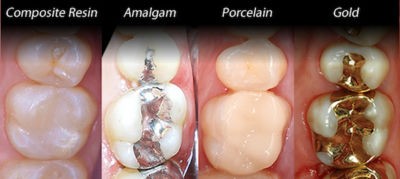
Composite Resin / White Fillings
 Composite resin fillings, or white fillings, are a tooth-coloured filling made from a type of resin. It is a very versatile and cosmetically ideal material that is both durable and convincing at mimicking the appearance of a real tooth.
Composite resin fillings, or white fillings, are a tooth-coloured filling made from a type of resin. It is a very versatile and cosmetically ideal material that is both durable and convincing at mimicking the appearance of a real tooth.
Advantages: It can match your natural tooth colour and appearance. Composite resin can also restore a tooth to 85-95% of its original strength, and the resin bonds directly with the tooth, meaning less has to be done to the structure of the tooth to prepare it.
Disadvantages: It is more easily stained, particularly by frequent consumption of dark liquids like coffee or wine. They are also not as strong as the more traditional metal fillings, and they tend to be a bit more expensive than traditional options.
Cost: The cost of any filling will depend on whether it is a front or back tooth and the severity of the procedure. But in general, a composite resin filling in the U.S. will range from $130-$250 per tooth.
Porcelain Inlays and Onlays

Porcelain inlays (or onlays) are used in situations where there is a significant portion of the tooth missing and there needs to be greater structural integrity.
Porcelain inlays/onlays are made from porcelain that is crafted in a laboratory based on a mould created of your tooth. The porcelain filling is crafted uniquely to fit your tooth exactly and is cemented/bonded to your tooth during a second dentist visit.
Advantages: Porcelain fillings are very strong and significantly increase the integrity of the tooth, while still bearing a very natural tooth appearance. They are more stain resistant to staining than composite resin and are very durable.
Advantages: They are not as convenient, however, as the whole procedure requires two trips to the dentist.
Cost: They are also much more expensive per tooth, costing on average anywhere from $300 to $1,500 per tooth!
Gold Fillings
Indeed made of gold, these fillings have some surprising benefits. You can get them as inlays (when the portion of the tooth that is replaced is inside the cusp tips) or onlays (more extensive coverage including of the chewing surface and cusps themselves).
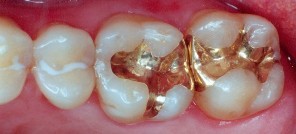
Advantages: They are very durable and have an incredible life, lasting up to ten to fifteen years when properly cared for. They also do not corrode, as some amalgam fillings tend to do.
Disadvantages: However, while they are more durable and last longer, they are very noticeable and are significantly more expensive than resin or amalgam fillings. It is a precious metal after all.
Cost: Depending on the size of the cavity, they can easily cost well into the thousands per tooth.
Silver Amalgam

Silver amalgam fillings are the oldest and most familiar of all dental fillings. They are made of an amalgamation of silver, tin, copper and liquid mercury.
Advantages: They are quick and easy to make, require the least amount of tooth to be removed and is also the most cost-effective, usually not even costing $200 per tooth.
Disadvantages: However, there is a lot of concern about the mercury contained in these fillings, though no conclusive evidence has ever been found determining that it presents a real health risk.
In addition to that, however, silver amalgam fillings also contract and expand with changes in temperature, which can weaken and damage the surrounding tooth structure.
Cost: Usually less than $200 per tooth.
Glass Ionomer Cement Fillings
Created from a reaction of a silicate glass-powder and an ionomer, polyacrylic acid.
Advantages: The material’s colour is similar to natural teeth and it bonds to the tooth well. A unique property of this type of filling is that it releases fluoride to prevent recurring tooth decay.
Disadvantages: However, this filling type cannot long withstand the full force of chewing, and so can typically only be used in areas that are not exposed to very heavy chewing. Even still, the lifespan is only about 5 years while its cost compares to that of composite resin.
Dental amalgam
Amalgam fillings are fillings made of a mixture of metals, usually known as silver fillings. They
Advantages: They are quick and easy to make, cost-effective, and have a very long history of successful use. They can last anywhere from 10-15 years, which is one of the longest life spans for fillings.
Problems with Dental Fillings
While the procedure is fairly simple and very common, there are some potential problems that patients may face.
For instance, in the initial hours, days or even the first couple of weeks, some patients will experience heat/cold sensitivity and discomfort when the tooth receives pressure during chewing.
Longer term concerns depend on the type of filling. As mentioned briefly above, there is some concern about the long-term effects of possible exposure to mercury from the amalgam fillings. Other concerns have to do with certain fillings requiring even some parts of a healthy tooth to be removed in order to place them.
International Price Guide
Understandably, many worry about cavity filling costs. Dental work is never cheap, and even simple fillings can add up. Fortunately, health insurance will often cover dental filling costs or at least a significant portion of it.
However, to help you estimate what your teeth filling cost might be, here is a quick snapshot of general prices across the world. It is important to remember that there will be a broad range depending on the type of filling, as well as the severity of the decay/hole being filled:
• USA: $130 – $1,300 per tooth (porcelain as much as $4,500)
• Australia/New Zealand: $100 – $300 per tooth
• India: 500 – 1500 per filling
• Canada: $80 – $325 per filling
• Asia: $10 – $32 per filling
• United Kingdom: £45 – £120 per filling
• South America: $70 – $80 per filling
• Europe: €8 – €156 per filling
For a more precise cost, we recommend you contact your nearest dental practice.
Here is a quick video guide.

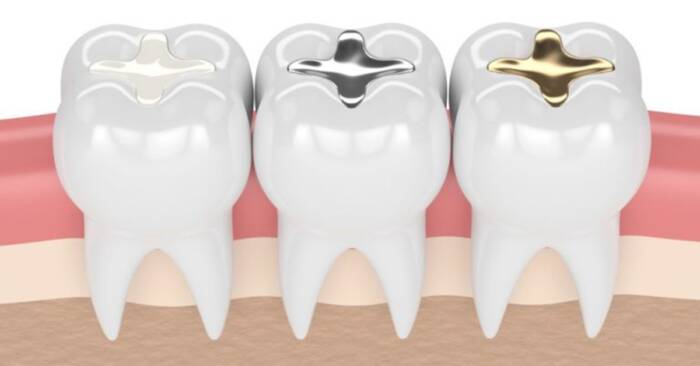


Add comment